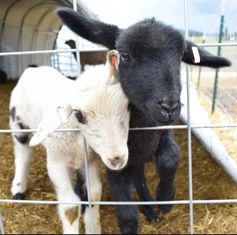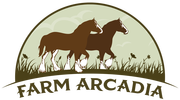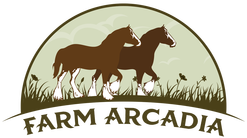 "How can you stand to eat your pets!?" I'm sure most people have asked that or been told that depending on which part they play: the meat raiser or the supermarket consumer. Let me just take a moment to explain one thing - eating my "pets" is actually nicer than eating feedlot beef. My animals are loved, handled gently, and allowed to behave like animals should. They eat healthy food, sunbathe, scratch on trees, and enjoy their lives. They are raised by their moms and kept in herds of their friends. When they are "taken down the road," they have no idea what is happening. They are not hurt first or scared or kept in crowded dirty pen or feed lots. Lights on, lights off. I don't think all animals are afforded the same courtesy, especially poultry, and I think that part is the shame. This does tie in to naming livestock. Livestock are not the same as pets ... not always. Pets are companions and often work on the farm, too. Livestock are producers (or should be). We name all the livestock we plan to keep for longer than meat. Honestly, a lot of the calves end up with nicknames even though they are destined for the freezer - there is Hamburgler, Big Red, Little Red, Chocolate. We've heard of naming them Meatloaf, Chuck, Fillet Mignon (we didn't eat her but sold her - too cute), etc. Our other animals have names that, for the most part, we remember and use when we handle them, and we have a method to this madness. In the course of studying Old Norse (home school) and after an unplanned layover in Iceland, we discovered an old cool way of naming. Last names were based on the parent's first name. So a daughter with a father named Hans would be named Hansdottir (dottir = daughter). A son with a mother named Ingrid would be named Ingridsson. We thought it was pretty neat and implemented in naming our livestock we keep, though all last names are based on the mother's name (not the father's).
Our goats are named after spices and herbs. I compiled a list 71 and add to it as I find new names. Some are weird, but some are very cute. Salt and Pepper are twin sisters. So are Cocoa and Canela Cinnamonsdottir (mom was named Cinnamon). I don't name the boys other than my studs, which are named "normal" names - Harry, Ron, Lenny, and Carl. My sheep are named after flowers (142 names on my list), but as there are so many sheep, I looked into scientific names. There are a lot of good ones. There's Delphenia, Celosia, Bluebell, Ivy, Jasmine, and even Flower Blossomsdottir. Boys (studs) are named normal names, too - Scotty, Spock, Shaun, and Seamus. In my records, I keep the animal's last name and it tells me easily who is her mother and makes tracing her family line much easier. It gives me a better mental picture than just numbers. I know Petunia's daughter Primrose had a lamb Peony that I suspect will have good milking qualities and good mothering because both Petunia and Prim were great. I also get a feel for less desirable lines - ewes who low producers or poor mothers. I also assign each animal a number in the event that there is a repeated combination of first and last name, and just as an added step to clarify identity. I also use this number to help track testing for the state or if I submit samples from them for genetic testing. Milking cows and my beef breeders are also named - mostly classic names for the diary and cowgirl names for the beefers, though there is some variation. Milking cows are Nellie, Bessie, and Fiona, for example. Some beefers are Cassidy, Collee, and Tinkerbell - that's a "cowgirl" name that she came with. We will end up eating some of them. When the names have all been used, I do recycle them and use them again. I start with animals that have been sold or died and reuse those first. I may have two with the same first name sometimes, but not so far. Some know their names very well. I can call one of my dairy girls by name while in a holding pen and she'll come forward and take her turn milking. It's also useful to calm them down if they are scared. The cattle definitely know their names and usually come when called because we give them treats. If you come to the farm and meet our animals, the yellow ear tag on sheep and goats has their number on the front and name on the back so we can see their names when working from behind to milk them. Feel free to call them by their names or just refer to them as "sheep," "goat," or "cow." That won't offend them.
0 Comments
Your comment will be posted after it is approved.
Leave a Reply. |
Mindy HelmsWife to Brandon, mother to Tess and Liam, farmer, entrepreneur, cook & baker, nurse, and accountant who loves to try new things, travel, and work toward greater self-reliance. Archives
May 2024
Categories
All
|

 RSS Feed
RSS Feed
